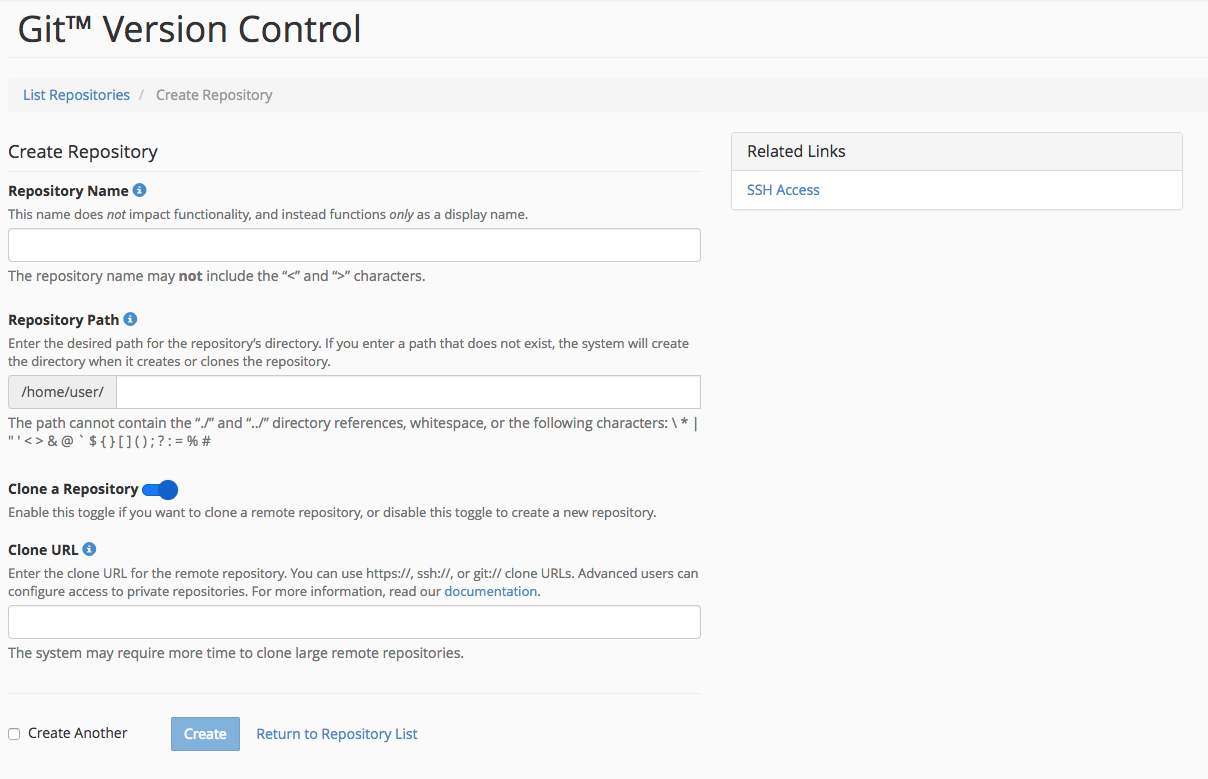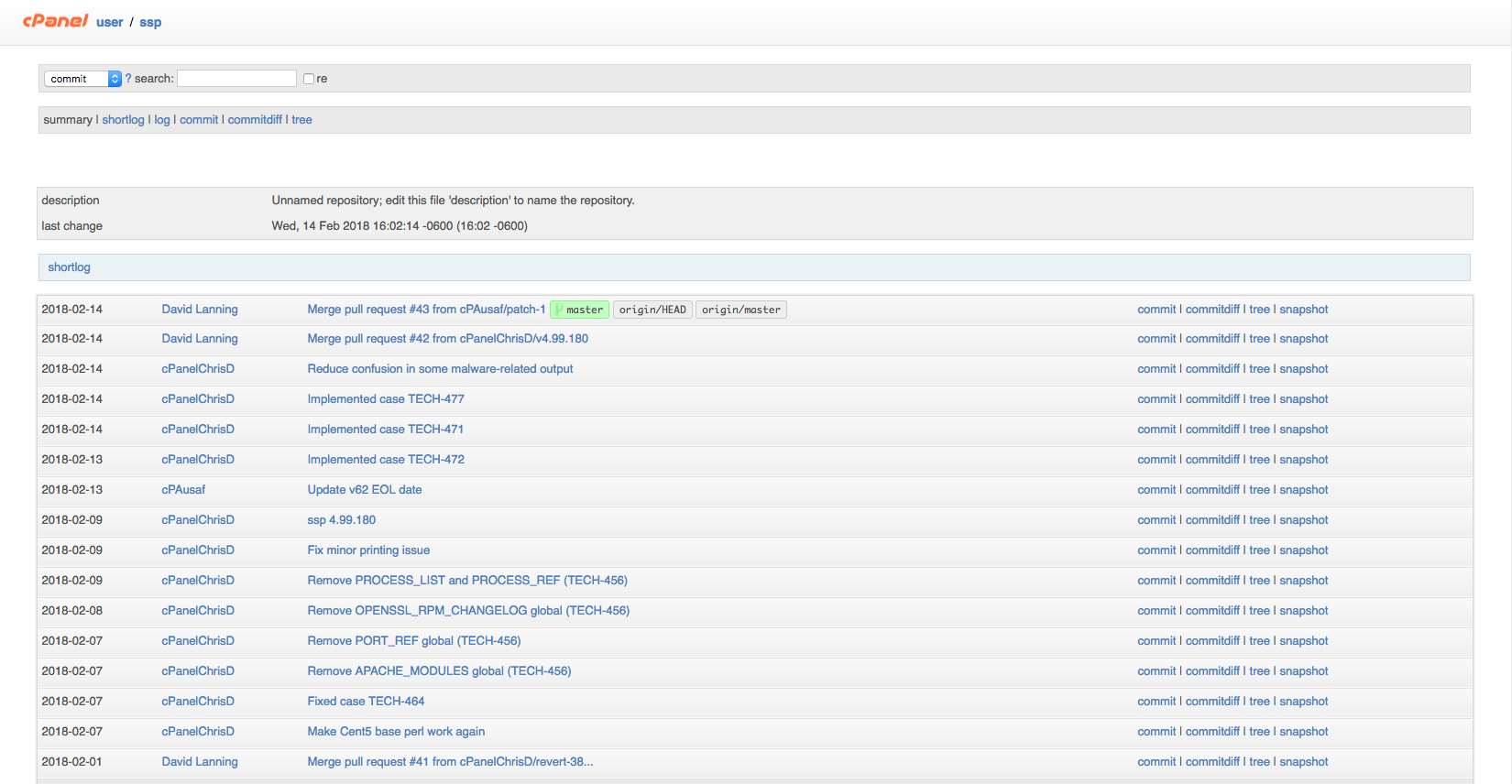
Git Version Control series: What can you do with Git Version Control?
The new Git feature will let you create and manage repositories and view change history in a friendly interface. A lot of Git’s functionality requires command line knowledge, but don’t worry! It’s easy to learn. Here’s the rundown of what you can expect.
Clone and Create Repositories

We’re figuring that most of our users will want to clone existing repositories from places like GitHub and GitLab, but you can use this feature to create new repositories too. Set a repository name, set a repository path, and, if you’re cloning, provide a clone URL — it’s that easy! Create as many as you want as long as you’re under your disk space quotas. If you’ve got SSH access, you can work in these repositories from the command line or in version 72’s new Terminal interface.
Your Changes, Wherever You Want Them
This feature is a great way to push content around without a whole lot of work. You can easily send changes from your local computer or a remotely-hosted repository to the repository hosted on your cPanel account. It’s a no-fuss solution to data management.
Easy Access to Git History

Since we’re shipping with Gitweb integration, you can easily view your repository’s history. We display information about the HEAD commit in the interface, too, so you don’t have to guess where your commit is.
Awesome, right?
If you already use Git, we hope that this feature will knock your socks off! If you don’t, we’re hoping we can help you start! We’re just about finished with the version 72 release of Git Version Control, but we’re planning to expand the features in version 74.
Check out the SnapBlox blog and follow us on Twitter to keep up-to-date with the latest news in web hosting, security, and scripting.
